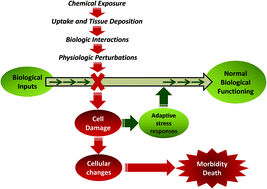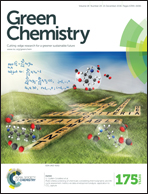Zebrafish as an in vivo model for sustainable chemical design
Abstract
Heightened public awareness about the many thousands of chemicals in use and present as persistent contaminants in the environment has increased the demand for safer chemicals and more rigorous toxicity testing. There is a growing recognition that the use of traditional test models and empirical approaches is impractical for screening for toxicity the many thousands of chemicals in the environment and the hundreds of new chemistries introduced each year. These realities coupled with the green chemistry movement have prompted efforts to implement more predictive-based approaches to evaluate chemical toxicity early in product development. While used for many years in environmental toxicology and biomedicine, zebrafish use has accelerated more recently in genetic toxicology, high throughput screening (HTS), and behavioral testing. This review describes major advances in these testing methods that have positioned the zebrafish as a highly applicable model in chemical safety evaluations and sustainable chemistry efforts. Many toxic responses have been shown to be shared among fish and mammals owing to their generally well-conserved development, cellular networks, and organ systems. These shared responses have been observed for chemicals that impair endocrine functioning, development, and reproduction, as well as those that elicit cardiotoxicity and carcinogenicity, among other diseases. HTS technologies with zebrafish enable screening large chemical libraries for bioactivity that provide opportunities for testing early in product development. A compelling attribute of the zebrafish centers on being able to characterize toxicity mechanisms across multiple levels of biological organization from the genome to receptor interactions and cellular processes leading to phenotypic changes such as developmental malformations. Finally, there is a growing recognition of the links between human and wildlife health and the need for approaches that allow for assessment of real world multi-chemical exposures. The zebrafish is poised to be an important model in bridging these two conventionally separate areas of toxicology and characterizing the biological effects of chemical mixtures that could augment its role in sustainable chemistry.

- This article is part of the themed collection: Molecular Design for Reduced Toxicity

 Please wait while we load your content...
Please wait while we load your content...